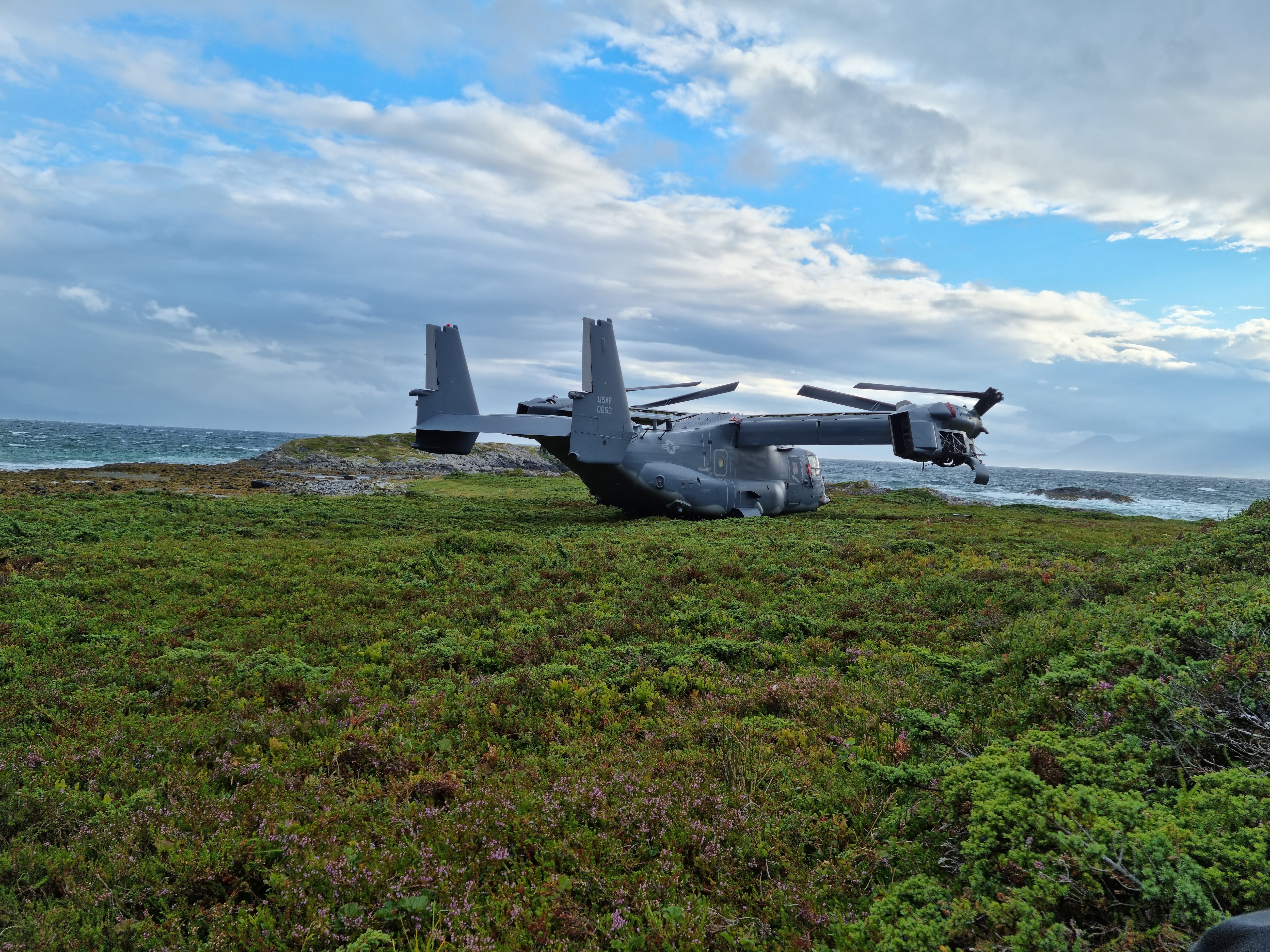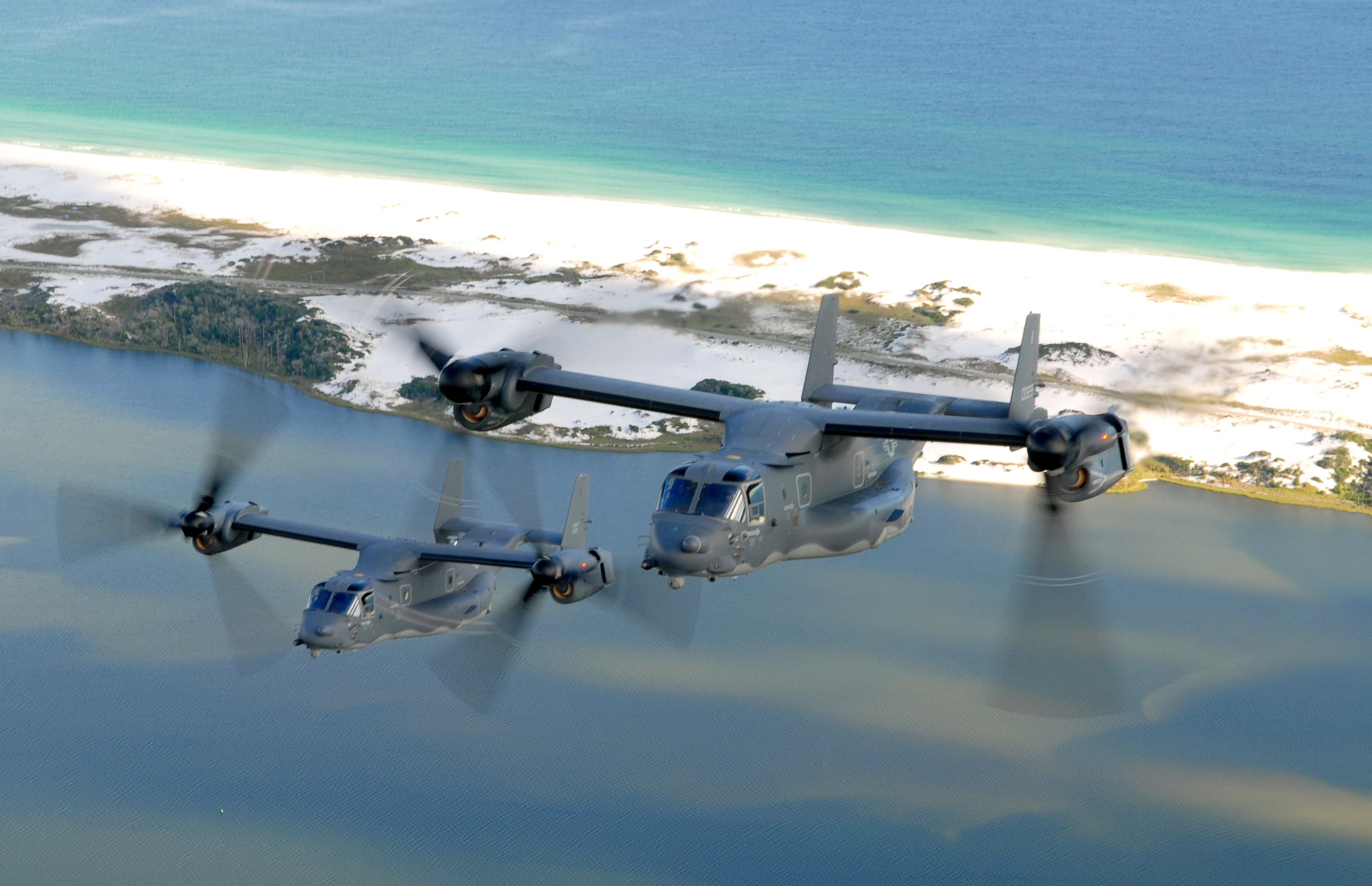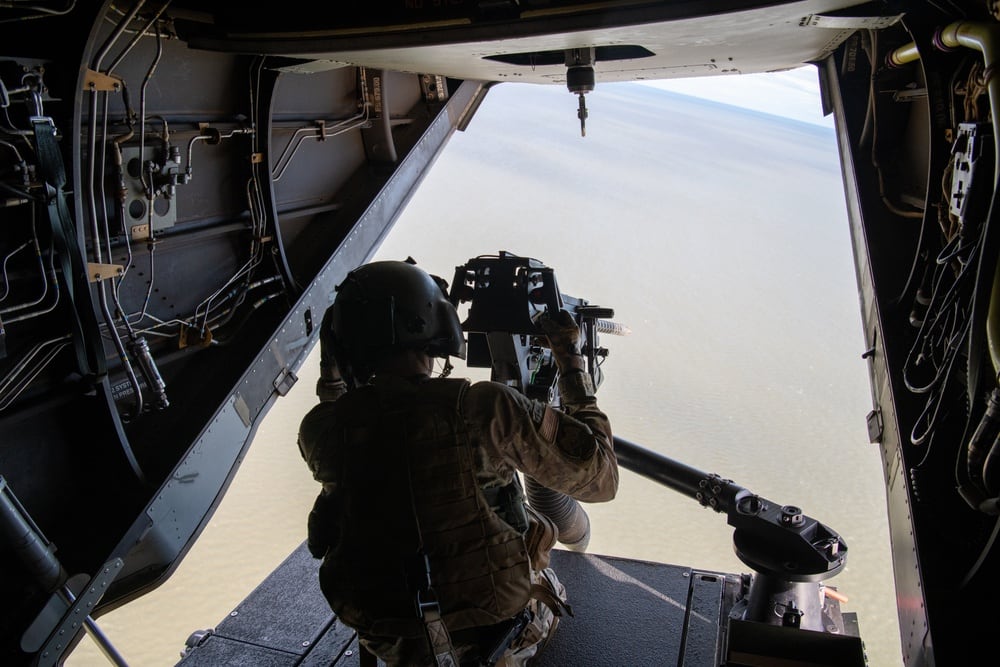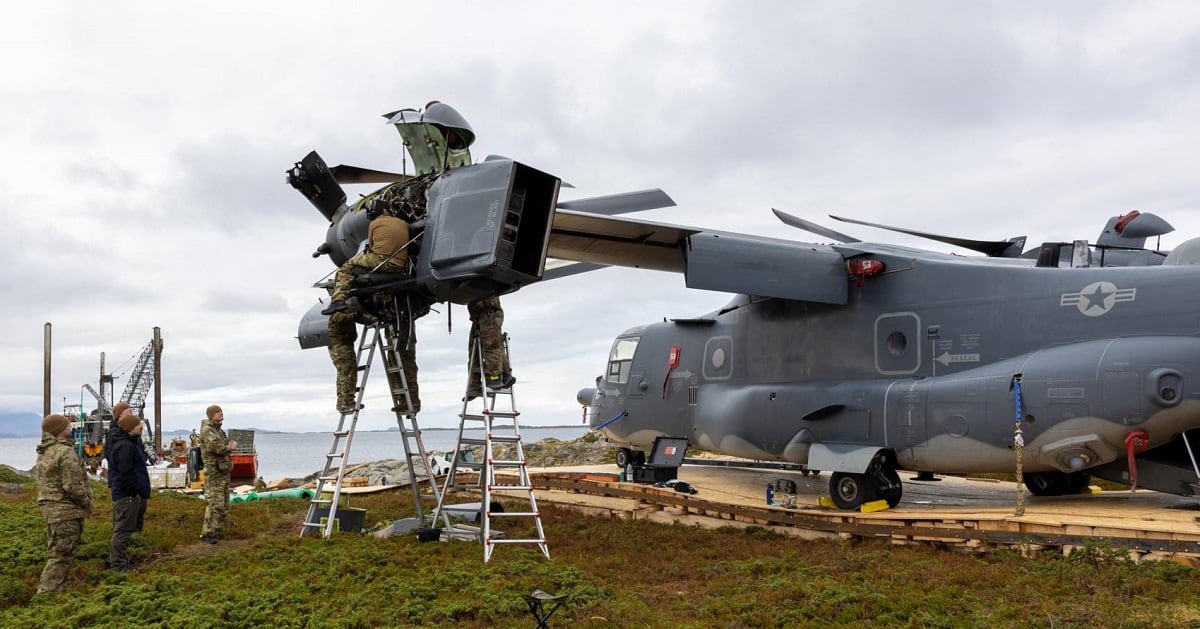NATIONAL HARBOR, Md. — Air Force Special Operations Command plans to replace components of its CV-22 Ospreys following a deep dive into a potentially fatal propulsion issue that has persisted for more than a decade.
Still, the organization’s three-star commander cautioned that there’s much more to learn about what’s causing the tiltrotor aircraft’s clutch — and in turn, the engines — to stall.
“What I intend to do is put a time-change requirement on those clutches,” Lt. Gen. Jim Slife told reporters at a roundtable here Tuesday. “The supply system is going to take a while to react to that because we don’t replace all that many of them right now.”
RELATED

The clutch allows the engine to power the gear system that turns the Osprey’s massive rotors. Either engine can drive both rotors in case one engine fails. The issue arises when the clutch slips and corrects itself, rapidly switching that load between motors.
“Those large, transient torque spikes exceed the limitations of the engines and the gearboxes,” Slife noted at a Sept. 7 event hosted by the Air and Space Forces Association. “Each one of them results in a ‘Christmas tree’ of caution lights in the cockpit and some pretty squirrely flight control inputs.”
One of those torque spikes can destabilize the Osprey after just one-millionth of a second.
Fifteen such clutch malfunctions have happened so far, including four in the Air Force and 11 in the Marine Corps. The military has averaged about one clutch incident annually for the past 14 years.
The components that have failed are around the middle of their expected life span and have been used for years, Slife added Tuesday.
RELATED

The Air Force’s first encounter with a problematic clutch came in 2010, he said. Two have occurred on AFSOC aircraft in the past few months. None of the service’s incidents happened during combat operations, and aviators have landed safely.
One CV-22 that suffered the clutch mishap and made an emergency landing on a nature reserve in Norway’s High North last month should be off of the remote island next week, Slife said. Norwegians are building an elevated ramp on which to lead the aircraft to the water without ruining protected wildlife on the reserve.
“It’s just 80 meters or something from the water’s edge, which is where we need to get it to,” he said. “We’ve got a barge with a crane that’s going to put it on, and we’re going to float it to an airfield where we can where we can actually repair it.”

But the root cause of the clutch malfunction continues to elude the Air Force. Slife suggested that flight data recorders on the aircraft could take in information more frequently to better pinpoint what’s going wrong.
“You would take a data point here, you’d have a torque spike and the hard clutch engagement, and then the next data point’s on the other side of that,” he said. “You can see what happened before and after it, but you don’t actually have the granularity of the data that you need to be able to understand exactly what’s happening.”
RELATED

He also lamented their inability to crunch that data to figure out a path forward. In an ideal situation, AFSOC would have a database that lists the age of each clutch so they could be replaced before they become unreliable.

Until the Air Force gets that level of detail on the problem, though, it has to make decisions with the information it has available. Moving ahead with the plan to replace clutches could buy the service more time and keep airmen safe.
“What would I say to myself in the aftermath of a fatal mishap, [if] we discovered that the reason was this clutch issue?” Slife said. “Would I look back and say that I did everything that I could? … I couldn’t answer that in the affirmative.”
The commander said he wasn’t aware of the problem until it happened in 2020.
The issue is one of several major defects, known as “Category 1 deficiencies,” plaguing the aircraft. Previous special ops leaders decided that operational need outweighed the risk of those problems and cleared the Ospreys to fly, Slife said.

“When you bring all that to light, it does bring focus to these other deficiencies,” he said. “Are we still OK accepting the risk for these other things? Or do we need to address that as well?
Special ops airmen fly their 52 Ospreys on long-range infiltration, exfiltration and resupply missions where its ability to behave like either a fixed-wing plane or a helicopter comes in handy. The Marine Corps will own the vast majority of more than 450 V-22s in the joint program.
The airframe’s woes have persisted for years, thanks to the rough nature of special operations and other factors that stress the massive tiltrotors and their internal wiring.
“CV-22 readiness keeps me up at night,” Brig. Gen. Dale White, then a colonel in charge of special operations programs at Air Force Materiel Command, said in 2019. “It’s not what it needs to be. It’s a tough platform to maintain.”
Rachel Cohen is the editor of Air Force Times. She joined the publication as its senior reporter in March 2021. Her work has appeared in the Washington Post, the Frederick News-Post (Md.), Air and Space Forces Magazine, Inside Defense, Inside Health Policy and elsewhere.




